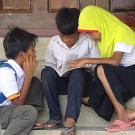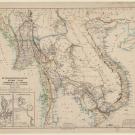Human, Cultural, and Physical Geography in Vietnam
WL.CL2.S: Cultural Products, Practices, and Perspectives, WL.CN2.S: Diverse Perspectives and Distinctive Viewpoints, RI.9-10.1Students will be able to describe the cultural, linguistic, and geographical differences of present-day Vietnam by exploring various sources and creating a collage.






